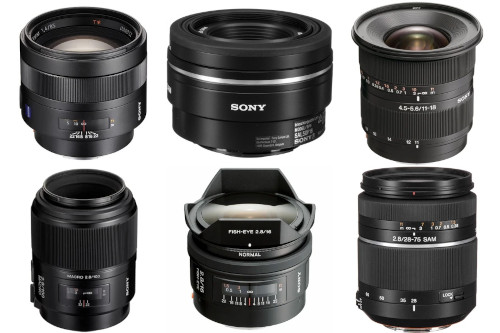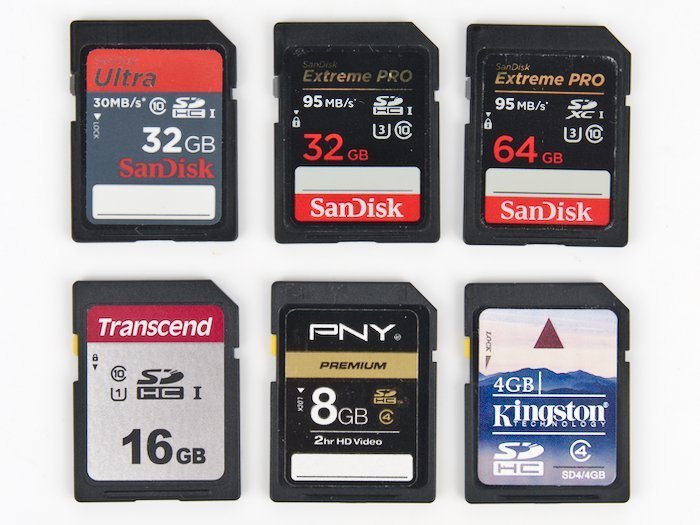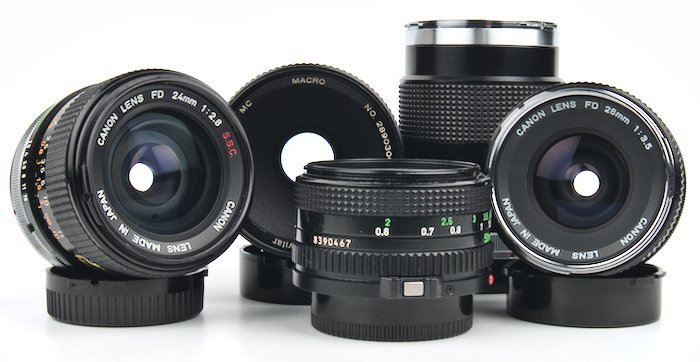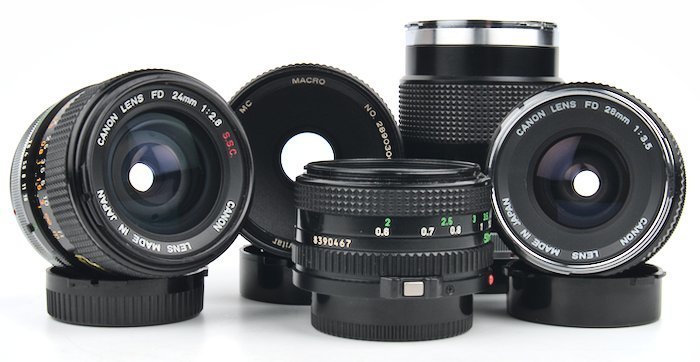
The 5 Best Canon AL-1 Camera Lenses
- Nathaniel Stephan
- Canon al 1
- March 17, 2020
Table of Contents
The AL-1 is a superb camera.
If you don’t have a lens or are looking for a new lens, this page will cover the top 5 lenses to use with your AL-1 camera.
Affiliate Advertising Disclosure
Outside the Shot is a participant in the Amazon Services LLC Associates Program, an affiliate advertising program designed to provide a means for sites to earn advertising fees by advertising and linking to Amazon.com.
As an eBay Partner, I may be compensated if you make a purchase. I also participate in affiliate advertising programs with KEH and Adorama. More can be found on the Affiliate Disclosure page.
More information is further down, but if you’re in a hurry, below is the list:
- Kit Lens - Canon FD 50mm f/1.8 (eBay)
- Wide Angle Lens - Canon FD 28mm f/3.5 (Amazon)
- Portrait Lens - Canon FD 100mm f/2.8 (Amazon)
- Zoom Lens - Vivitar Series 1 70-210mm f/3.5 (eBay)
- Macro Lens - Vivitar 90mm f/2.8 (eBay)
Kit Lens and Standard Primes
Canon FD 50mm f/1.8
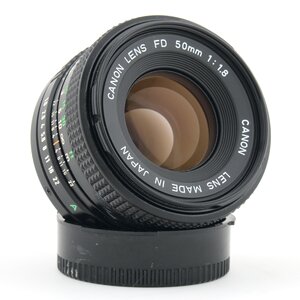
The Canon FD 50mm F/1.8 lens was the “kit Lens” often sold with the AL-1. The 50mm f1.8 is widely available used, has excellent picture quality, and is cheap.
- The “classic” setup as it can be considered the original kit lens.
- Unbeatable value.
- Light and compact.
- Widely available and easy to find in good condition.
- Uses 55mm filter threads.
Check a variety of places to find the best condition and price.
See current price and more information on:
For a 50mm lens of photography, a 50mm camera lens is an excellent choice. The aspects of photography consist of travel, street, portraits, landscapes, architecture, and casual everyday use. This is the most popular focal length that is used with the AL-1.
The lens is well balanced, small, and light. Depending on the version of the lens, it will weigh between 170-305g. The new FD version, which was the last to be designed, is the lightest.
There are also 2 faster versions of the 50mm lens in a Canon FD lens mount.
Canon FD 50mm f/1.4
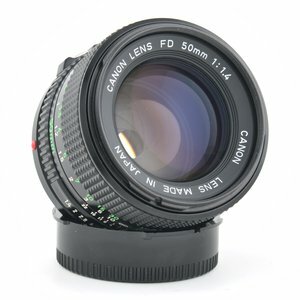
At the additional cost of weight, the Canon FD 50mm f/1.4 is 2/3 of a stop faster. It is only slightly more expensive when compared to the f1.8.
- Excellent image quality.
- Optical multi-coatings.
- Fairly easy to find in good condition.
- Larger and heavier than the f/1.8.
The 50mm f/1.4 comes in 4 different versions. The “new FD” copy is the lightest and newest of the bunch.
See current price and more information on:
This lens is bulky, heavy, and tough to focus lens. Shot wide open, images will not be sharp. If you stop the lens down to f/1.8 or f/1.4 you will not see much of a difference between it and the other lenses.
The two versions of the lens are high-priced. The cost of the lens is stemming from rarity and collectibility, not optical performance.
Alternative Standard Lenses
If the 50mm focal length isn’t what you are looking for, here are additional options. Expect to have to spend additional money than you normally would for a 50mm lens of equivalent speed.
- Canon FD 35mm f/2 SSC
- Canon FD 35mm f/2.8
- Canon FD 35mm f/3.5
- Canon FD 55mm f/1.2
Wide Angle Lens
Canon FD 28mm f/3.5
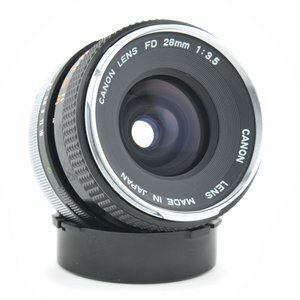
A very popular focal length for street photography is 28mm. However, lenses that are wider than 28mm are most commonly used for architectural and landscape photography.
- Great combination with a 50mm lens.
- Optical multi-coatings.
- Inexpensive and widely available.
- Small and light.
See current price and more information on:
My top choice is the Canon FD 28mm f/2.8 mainly because of the inexpensive price, wide availability, and top notch optics.
Alternative Wide Angle Lenses
In terms of cost, the correlation is simple. The wider the field of view, the pricier the lens ıs going to be. Lenses with larger apertures also go for noticeably more.
The weight will differ depending on the qualities of the lens. You will see lenses from 170g to 500g. Faster apertures will also mean that those lenses will physically be large and cause the camera to be front heavy.
- Canon FD 7.5mm f/5.6 Fisheye
- Canon FD 14mm f/2.8L
- Canon FD 15mm f/2.8
- Canon FD 17mm f/4
- Canon FD 20mm f/2.8
- Canon FD 24mm f/1.4
- Canon FD 24mm f/2
- Canon FD 24mm f/2.8
- Canon FD 28mm f/2
- Canon FD 28mm f/2.8
Portrait & Telephoto Lens
Canon FD 100mm f/2.8
The 85mm lens wasn’t as big of a deal when the AL-1 was first made. Rather, the 135mm focal length was the first choice for a portrait lens.
- Excellent portrait lens.
- Less expensive 85mm alternative.
- Great value.
- Inexpensive.
See current price and more information on:
For capturing portrait photos with the AL-1, there are a few short telephoto lenses to select among. The 100mm f/2.8 lens is one of the most economical possibilities available.
An 85mm lens will have the highest price, with 135mm lenses sitting in the middle of the price bracket.
As every one of the Canon FD telephoto lenses are manual focus, they are more compact than EF versions. Needless to say, something like the Canon FD 85mm f/1.2L has to be heavy and enormous due to the quantity of glass in the lens.
Anticipate low prices for the Canon FD 100mm f/2.8. There is a 100mm f/4 macro version of the lens. It will probably will cost more and is not the ideal choice for portraits as the lens ought to be stopped down.
Alternative Telephoto Lenses
Another option, the Canon FD 135mm f/2.8 is one of the most economical prime lenses you can get. You will be required to search through a large amount of listings for third-party 135mm lenses that aren’t going to be anywhere close to as good as a Canon lens.
There are several 85mm lenses to choose from. The most expensive is the Canon FD f/1.2L lens. A cheaper option is the Canon FD 85mm f/1.8 lens, but it will be somewhat higher priced when compared to the numerous other telephoto lenses mentioned earlier.
- Canon FD 85mm f/1.2L
- Canon FD 85mm f/1.8
- Canon FD 100mm f/2
- Canon FD 135mm f/2.5
- Canon FD 200mm f/2.8
- Canon FD 200mm f/4
AL-1 Zoom Lenses
Canon FD 35-105mm f/3.5 & Vivitar Series 1 70-210mm f/3.5
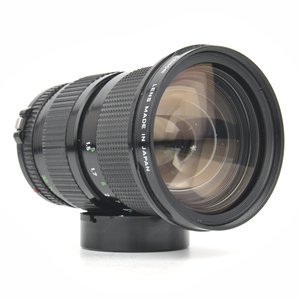
The benefits of combining a AL-1 along with a zoom lens is tempting. Having the capability of using a range of focal lengths with no need to swap a lens is wonderful.
Remember that that all of these are older zoom lenses.
- Haze and or Fungus
- Large amount of dust in the lens
- Loose or tight zoom ring
- Loose or tight focus ring
- Oil on the aperture blades
- Decentered lens elements
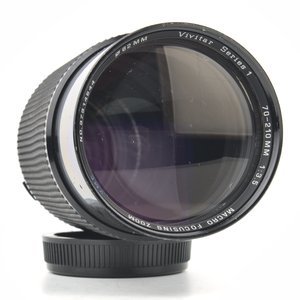
Additionally, you need to keep in mind the drawbacks the lenses have even when in excellent condition.
- Image quality will not be good when shot wide open.
- One or both ends of the focal range may suffer from a large amount of distortion.
- Zoom lenses are larger and generally heavier than primes.
Alternative Zoom Lenses
In terms of costs, nearly all vintage zoom camera lenses will likely be bargain priced.
- Canon FD 70-210mm f/4
- Canon FD 80-200mm f/4L
- Canon FD 28-85mm f/4
Macro Lens
Vivitar 90mm f/2.8 & Vivitar 55mm f/2.8
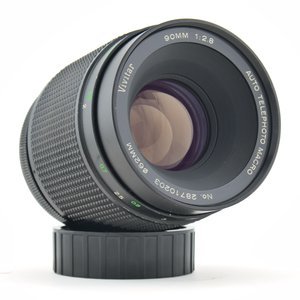
- My favorite vintage macro lens.
- Available in multiple lens mounts.
- Incredible value.
- Sharp corner-to-corner at f/8.
See current price and more information on:
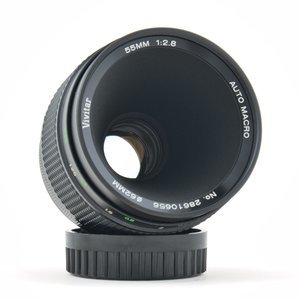
- My second favorite vintage macro lens.
- An excellent choice for close-up photography.
- It does not need an extension tube to reach 1:1 magnification.
See current price and more information on:
The two recommended macro lenses were produced by Komine in Japan. The lens was also sold under different brand names. Rokunar, Elicar, Quantaray, Panagor, and Spiratone are names you might find on a copy of the lens.
There is a Vivitar 90mm f/2.8 Macro Lens Review and a Vivitar 55mm f/2.8 Macro Lens Review.
For taking photographs at lifesize magnification (1:1), the 90mm lens will likely be the superior choice due to the fact that it has a greater working distance.
The 55mm lens is extremely good for close-up and table-top photography.
Alternative Macro Lenses
- Canon FD 50mm f/3.5
- Canon FD 100mm f/4
- Canon FD 200mm f/4
Used FD Camera Lens Prices
Prices are frequently changing. For the past 3-4 years, interest in film photography has been increasing. As a result, price ranges have steadily increased.
To end up with the best price, reviewseveral online stores. Quickly get a incredible price in the event that you see one mainly because it can be a very long time until another is available.
What Lens Mount Does the Canon AL-1 Use?
The AL-1 utilises the Canon FD lens mount. Canon used the FD mount for film cameras manufactured from 1971-1992.
Here is a list of all the cameras that have a Canon FD mount.
The Canon FL mount was preceded by the FD lens mount, which was implemented from 1964 to 1971. FL mount lenses can be used on the AL-1, but you will be required to use stopped down metering.
Standard Lens Cap Size
The standard lens cap and filter ring thread diameter for Canon FD lenses is 55mm.
Utilising a standardized filter thread size is nice due to the fact that you only need to get hold of and carry one set of filters.
A handful of telephoto and zoom lenses have bigger filter ring thread diameters because they have sizeable front lens elements.
FD vs FL Lens Mount
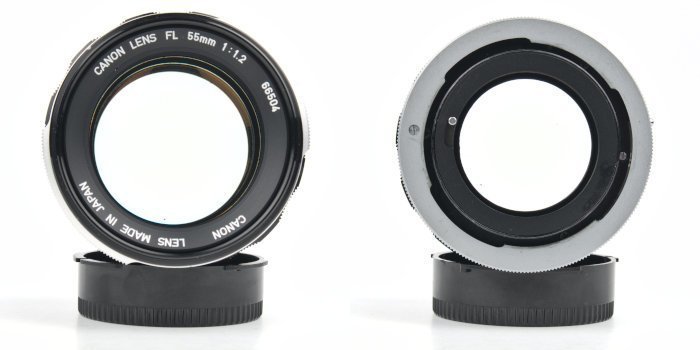
The Canon FL mount was made prior to the FD mount. You are able to use FL lenses on the FD mount, and FD lenses can be used on the FL mount.
What Canon FL mount lenses do not have the feature to do auto stop-down metering. As a consequence FL mount lenses will need to be stopped down with the depth-of-preview switch to ensure that the AL-1’s light meter to show a correct value.
FD vs new FD Lenses
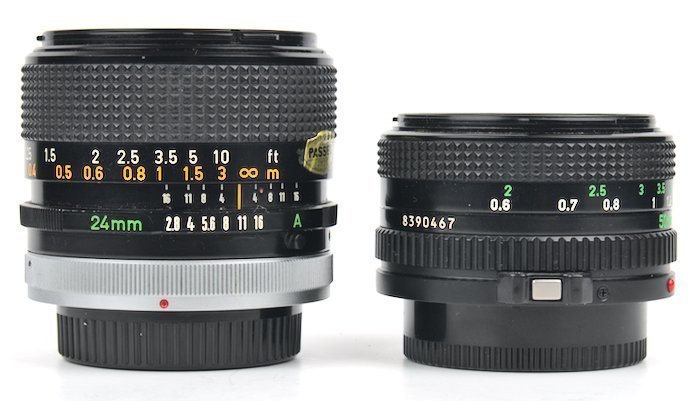
The whole body of the new FD lens rotates to lock onto the camera. As opposed to original FD lenses which have a breech-lock ring at the back of the lens that must be tightened in order to mount a lens.
FD and new FD lenses are interchangeable with each other. There are no compatibility issues.
Frequently you will see new FD lenses referred to as FDn lenses.
The change in the design of the breech-lock ring was because of complaints. A small number of customers endured lenses getting jammed on a FD camera mount.
If you are not familiar with attaching an FD lens to a camera body, don’t be concerned. Simply just take the process slow and don’t force anything.
Telling FD and FDn Lenses Apart
It is fast and easy to tell new FD and FD lenses apart. New FD lenses have a silver button located on the barrel of the lens, where the lens mounts to the camera.
The older FD lenses have a ring that is required to be rotated after the lens is mounted to lock the lens into place.
